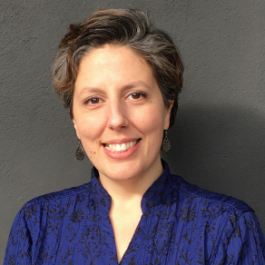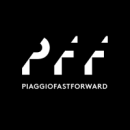Change isn’t just a possibility in the world of product development — it’s inevitable.
Alex Radu has learned this firsthand throughout her career. The product and marketing manager at JPMorgan Chase said she has never been involved in a project where the needs stayed the same the entire time.
That environment of continuous change heightens the importance of alignment between Radu and her peers through the development process. She shared that, by relying on various tools and practices — such as asynchronous communication and strong documentation — everyone stays on the same page from start to finish.
Radu is one of many product management professionals around the country to have found the keys to working in tandem seamlessly. Read on to see what she and other product development professionals had to say about fostering and maintaining alignment with product roadmaps, even when project needs change during the development process.
Featured Companies
JPMorgan Chase provides investment banking and financial services for consumers and small businesses, commercial banking, financial transaction processing and asset management worldwide.
How do you make sure all teams are on the same page when creating a product roadmap?
Alignment and agreement are crucial when creating product roadmaps to ensure focus on customer value and appropriate planning and resourcing for teams.
There are a few strategies that I leverage in my work. First, I make sure everyone is clearly aligned on the product vision and objectives, which is based on both long- and short-term customer needs.
It’s also important to work cross-functionally early on. Since product teams don’t work in isolation, it’s important to have all key stakeholders involved in planning. This could mean having design, research, engineering and operations representatives in a workshop to gather input and build shared understanding. This helps ensure everyone is aligned on changes and aware of potential blockers or unexpected workloads.
“Since product teams don’t work in isolation, it’s important to have all key stakeholders involved in planning.”
It’s also key to maintain a customer-centric approach, leveraging the voice of customer activities — such as feedback, user testing, beta users, surveys, interviews, focus groups and analytics — to create personas and prioritize work according to the demand and impact to customers.
Additionally, I define outcomes and metrics to guide development. Outcome-focused roadmaps are my favorite.
Lastly, I make sure to maintain regular communication as well as accessible and clear documentation.
How do you maintain this alignment throughout the development cycle?
It’s crucial to maintain regular communication as well as accessible and clear documentation to keep the alignment throughout the development lifecycle. I prefer asynchronous communication tools, such as initiative webpages, emails and chats, which allow everyone to contribute and be informed, regardless of factors such as time zone and work location. Having great documentation alongside communications is also important. I maintain two different roadmaps, internal and customer-facing, since customers don’t care about items in a backlog that don’t produce direct value for them. Ensuring all these are accessible and transparent reduces queries and extra requests.
Additionally, defining outcomes and metrics to guide development redirects the focus from features to customer achievements, allowing for easier alignment and prioritization across teams and stakeholders. Establishing key performance indicators allows for progress tracking, course correction and cross-team alignment. It’s important to have transparency and visibility into the prioritization and feature requests already existing, so the customers and stakeholders can truly understand the needs of the product customers.
Do project needs change during the development process? When this happens, how do you reprioritize the product roadmap and keep teams aligned?
For sure. I’ve never been involved in a project or product where needs stayed completely the same during the development process. Successful product managers review and update their roadmaps often, with many of us doing it at least once a month or once a quarter at most. Roadmaps can and should change in response to learning, customer demands, shifts in the environment and external activities on occasion.
Roadmaps are communication tools. I recommend several tips to help keep teams focused during change, including impact analysis. Assess the impact of the change on timelines, teams and resources and compare it to the impact on customer needs and adoption. Additionally, use a prioritization framework, such as RICE, to determine where the new feature should go in planning and secure agreement with the other stakeholders and teams. Also, make sure to update the product roadmap to include the new feature if agreed upon.
Lastly, communicate changes. Send a note to customers and stakeholders to explain the change and its value, ensuring everyone understands the new focus and alignment to the product vision and outcomes.
Inspira Financial offers a range of health, wealth, retirement and benefits solutions for both businesses and individuals.
How do you make sure all teams are on the same page when creating a product roadmap?
In the case of one of our product development teams focused on retirement services, planning intervals — also known as program increment planning — have fostered collaboration across teams to raise or further socialize dependencies. PI planning is a process in which business and technology teams come together to establish and nurture alignment to ensure the planning and delivery of the most valuable work. Bringing teams together encourages communication, knowledge-sharing and cross-functional alignment.
Our roadmap includes a feature to modernize and transition one of our products offered on a legacy platform to our modernized platform. This product lessens the administrative burden on certain clients, which is always a positive thing. We have a great relationship with the development team involved and collaborate outside of PI planning. However, this approach allowed us to formalize dependencies across teams and provide visibility to others that aren’t immediately involved in our day-to-day work. This awareness comes in handy for stakeholders and other interested parties in the case of delays or if priorities need to shift.
How do you maintain this alignment throughout the development cycle?
Our team involves the right stakeholders from the beginning of the project to ensure they’re engaged and know we’re ready for their input. Our sales team has been instrumental in connecting us with clients to conduct feedback sessions, some of which included clickable prototypes so we could learn how to make navigation within the platform more intuitive. We also sent a client survey to understand their expectations of what our new product should offer and predict their likelihood of adopting our product given a select feature set. This data was influential in raising considerations to our leadership team because we were able to use data and direct client feedback.
“Our team involves the right stakeholders from the beginning of the project to ensure they’re engaged and know we’re ready for their input.”
The product team also hosts a regular stakeholder meeting where metrics and product roadmap updates are discussed. This has allowed us to surface issues where there may not have been a consistent understanding so they can be addressed. When presenting, I try to use pictures to illustrate concepts when practical, as I believe it’s easier to talk through ideas when we can point to a process flow or to data. It gives meeting participants something to react to, which helps move the conversation along.
Do project needs change during the development process? When this happens, how do you reprioritize the product roadmap and keep teams aligned?
With two major corporate initiatives this year, there were instances when work needed to shift due to competing priorities or to address previously unknown items. Our product owner was creative in finding ways to shift work to enable product development within certain tech stacks, while other tech stacks were focused on corporate transformation efforts. Our stakeholder meeting was also key in communicating what would be available in our upcoming releases. In another example, our team was aware of a rebranding dependency with another platform team, and we worked closely with them to coordinate our releases to ensure key shared components were in sync.
Artera’s platform integrates across healthcare organizations’ tech stack, electronic health records and third-party vendors to make patient communications more effective.
How do you ensure teams are on the same page when creating a product roadmap?
It starts with making sure that all teams are aligned from the top down regarding their goals and success metrics. When each team has a different understanding of what success looks like, teams will naturally start to diverge from the roadmap. Getting that initial alignment on what our near- and long-term goals are helps us create a roadmap that we’re confident we can deliver on.
Data work is a great example of where this can become extremely challenging to manage. Often a horizontal that’s impacted by other product teams upstream, it can be challenging to keep everyone aligned. To help keep the data teams abreast of specific needs, we do a quick biweekly meeting in a round-robin style with the design and product management teams to create general awareness of what everyone is working on.
How do you maintain this alignment throughout the development cycle?
Like many organizations, our teams participate in the quarterly planning process. A crucial exercise we’ve identified is having every team articulate priorities and dependencies to the entire innovation organization after planning. As a mostly remote team, this has helped us have one last check to identify gaps in dependencies or areas of concern. As we progress throughout the quarters, we frequently connect with our teams through demos, regular meetings and one-on-ones to stay aligned with our goals and communicate any risks. For large cross-functional projects, we often use weekly or biweekly status reports to help create continued alignment across many different stakeholders and allow those stakeholders to engage with our product teams asynchronously.
“As we progress throughout the quarters, we frequently connect with our teams through demos, regular meetings and one-on-ones to stay aligned with our goals and communicate any risks.”
Do project needs change during the development process? When this happens, how do you reprioritize the product roadmap and keep teams aligned?
Project needs can absolutely change during the development process. When this happens, we like to start with understanding the “why,” breaking down the root cause of that change. For example, if a new technical dependency or blocker impacts the functional goal unexpectedly, we work closely with our design team to try and mitigate any negative impact on the user experience. We’re extremely fortunate to have an incredible design team that’s both knowledgeable in foundational design principles and technically savvy. They’re able to help our product team navigate the changes without sacrificing experience to achieve the original goal.
If the overall goal of a project needs to change, we try to overcommunicate. As product leaders, we prioritize sharing feedback from our executive teams and customers directly with our teams, but we also make time to ensure that our stakeholders are aware of any major changes as well. Meeting monthly with a core group of informed leaders in the company helps us pressure-test the decisions we’re making as product leaders and helps us keep the company informed on any critical roadmap changes.
Work & Co is a design and technology company that partners with companies, including IKEA, Apple, PGA TOUR, Gatorade, Google and more, to launch digital products that transform businesses.
How do you make sure all teams are on the same page when creating a product roadmap?
Work & Co’s client partners have a broad range and include leading global brands like Gatorade and PGA TOUR. But one constant is that, in order to push for transformation and launch successfully, product roadmaps should be flexible. Business goals, desired features and preferred user experiences give us a starting point in creating our roadmap, but we ideate beyond what our client partners expect. We want to take the most innovative approach to create breakout customer experiences that drive results.
Gaining alignment can be tricky, but our approach is to communicate our ideas in the form of testable prototypes to move forward. It motivates internal and client teams and gets everyone excited because the strategy becomes real; it’s a tangible experience of the product to rally around and gets everyone on the same page about the resources and timing needed to achieve key deliverables. It also helps that Work & Co’s project teams are lean and made up of seasoned, hands-on team members. This benefits us when decisions need to be made around the product roadmap because we have more expertise and a fewer number of minds to address the situation and move quickly.
How do you maintain this alignment throughout the development cycle?
Fast feedback loops and inclusivity matter. We include decision-makers regularly to maintain alignment instead of only looping them in around milestones. This is key for carrying out product strategy in real-time and allows us to make any changes to the roadmap on the fly, which is critical to the success of our projects. Regular involvement and transparent access to our projects and Figma files also create trust and ownership for all teams.
Work & Co doesn’t operate in silos; we believe that all disciplines contributing to the project are responsible for realizing a client’s vision. Integrating teams such as quality assurance early on ensures coherence throughout the entire product development process to help us develop and maintain our roadmap and collectively deliver the best possible product to the market.
“Work & Co doesn’t operate in silos; we believe that all disciplines contributing to the project are responsible for realizing a client’s vision. Integrating teams ensures coherence.”
Do project needs change during the development process? When this happens, how do you reprioritize the product roadmap and keep teams aligned?
We can always count on something to change, but an experienced team that communicates well can navigate whatever obstacles arise. Because we avoid handoffs, and clients’ teams and other disciplines are involved early on in the development process, it helps avoid major changes, since we’re validating and user-testing along the way at key milestones rather than just at the end.
That said, product development can be inherently messy — and that’s OK and worth embracing. We’re constantly assessing information to move forward with our work. We partner with clients to spot gaps and address them as soon as possible or clarify our understanding of the subject to move forward. It falls on our product management team to find things that come up and require change. We quickly find time to meet with the appropriate people to clarify, make decisions and course-correct.
SOPHiA GENETICS’ AI-powered platform enables healthcare organizations to garner insights from complex multimodal datasets and share knowledge with other institutions across the industry.
How do you make sure all teams are on the same page when creating a product roadmap?
Communication is key. I involve cross-functional teams early on to gather diverse perspectives, identify risks and align everyone from the start. To ensure all teams are on the same page when creating a product roadmap, I start by establishing a clear product vision and objectives, ensuring those on each team understand their role in achieving these goals.
Efficient documentation is crucial. I capture customer interviews, user needs and feature requests to align teams and establish continuous feedback loops to refine the roadmap based on real-time data and market insights. All this work is only as good as final prioritization. By integrating commercial relevance and the voice of the customer, along with attaching opportunity sizes to prioritized items, I ensure clear prioritization criteria. This approach keeps the team focused on the most impactful work, preventing resources from being spread too thin. By fostering transparency, prioritization and collaboration, teams stay aligned and motivated, leading to a cohesive and successful product development process.
Tomar’s Tips for Maintaining Alignment
- Consistent communication: I establish and maintain strong communication channels by closely collaborating with the project manager and technical leads. Regular weekly core meetings ensure that everyone is informed and aligned on priorities.
- Clear focus: In a fast-paced environment with constant changes in personnel or strategies, it’s essential to keep the focus on the overarching business goals that drive the product vision. This helps teams stay aligned and motivated, even during change.
- Feedback loops: I create continuous feedback loops with both internal teams and customers, allowing us to swiftly identify and address issues. This approach not only improves the product, but also fosters a culture of transparency and collaboration.
- Proactive conflict resolution: Strong working relationships are the foundation for team success. I address any misalignments or conflicts immediately, ensuring that they don’t derail the project. By resolving issues proactively, I keep everyone focused on our shared objectives.
Do project needs change during the development process? When this happens, how do you reprioritize the product roadmap and keep teams aligned?
Yes, project needs often change during development, driven by evolving customer demands, market shifts or new technical insights. As a product manager, it’s my responsibility to ensure we adapt swiftly while keeping the team aligned. When changes arise, I first collaborate with key stakeholders to reassess priorities and evaluate the impact on our overall objectives. Once a new direction is agreed upon, we update the product roadmap to reflect these changes, ensuring it remains a clear and strategic guide. I then communicate the rationale behind the re-prioritization to all teams, emphasizing how these adjustments align with our long-term vision.
Utilizing tools like Jira and Microsoft Teams, I make real-time updates accessible to everyone, followed by alignment meetings to discuss the implications and recalibrate timelines or resources as needed. Throughout this process, I maintain open lines of communication, regularly checking in with teams to address any concerns. This approach ensures we remain agile, focused and aligned, enabling us to deliver a product that continues to meet market and customer needs, even as priorities shift.
Constrafor provides risk management and growth solutions for construction firms.
How do you make sure all teams are on the same page when creating a product roadmap?
Here at Constrafor, we value the “voice of the customer.” To ensure all teams are aligned when creating a product roadmap, we start by meeting and listening to customers’ needs. We bring together representatives from all key teams, including engineering, design, sales and marketing, from the beginning. We align the roadmap with our company’s strategic goals and ensure everyone understands how their work contributes to these objectives.
For example, in a recent initiative to enhance our insurance management solution for general contractors and subcontractors, we held cross-functional workshops to gather ideas, prioritize features and ensure everyone understood goals and timelines. The team came up with the first AI Insurance review solution in the construction industry. This collaborative approach helped us deliver a cohesive product that meets user needs and business objectives.
How do you maintain this alignment throughout the development cycle?
Maintaining alignment throughout the development cycle involves regular communication and transparency. We hold frequent roadmap reviews where we update teams on progress, address any issues and discuss any changes. Our shared documentation tools ensure that everyone has access to the latest roadmap and relevant details.
“Maintaining alignment throughout the development cycle involves regular communication and transparency.”
Additionally, we have established feedback loops so that customers and teams can voice concerns or suggest adjustments, ensuring that any misalignment is caught early on and addressed promptly.
Do project needs change during the development process? When this happens, how do you reprioritize the product roadmap and keep teams aligned?
Yes, project needs often change during the development process. When this happens, we reassess and reprioritize the product roadmap based on the new information or shifting priorities. We immediately communicate these changes to all relevant teams, explaining the reasons behind the adjustments. By involving the leadership team in these decisions and maintaining open communication channels, we ensure that everyone stays aligned and understands the updated priorities, which helps us adapt quickly without losing focus.
Healthee’s AI-driven employee benefits app helps individuals find care and understand their coverage options.
How do you make sure all teams are on the same page when creating a product roadmap?
Making sure everyone is aligned actually starts even before the roadmap is created. Building a roadmap means maintaining an ongoing relationship with stakeholders to understand their needs and pain points, which is a daily effort. The product roadmap is essentially the explicit plan that prioritizes these needs within the constraints of resources.
At Healthee, we follow a business roadmap created by the leadership team, which we translate into product strategy and objectives. Each quarter, we set objectives, key results and initiatives to achieve them. This process starts about a month before the current quarter ends and involves stakeholders, development teams and leaders. Once finalized, the roadmap is shared across the company, ensuring it’s accessible to everyone.
“Once finalized, the roadmap is shared across the company, ensuring it’s accessible to everyone.”
How do you maintain this alignment throughout the development cycle?
Maintaining alignment throughout the development cycle at Healthee involves several key practices. We use a live product roadmap board that tracks objectives, key results and the breakdown of initiatives by expected work month. This board is continuously updated throughout the quarter.
Additionally, our development cycles span two weeks, with the second week dedicated to pre-planning. During this pre-planning meeting, we set sprint goals and decide which initiatives will be prioritized based on the high-level roadmap. This is followed by an alignment session involving all developers, where we synchronize tasks for the upcoming sprint, ensuring that everyone is on the same page.
Do project needs change during the development process? When this happens, how do you reprioritize the product roadmap and keep teams aligned?
In my experience, it’s rare to work on a project that doesn’t undergo some changes during development. Features and requirements often evolve, and the key to navigating these changes is to maintain effective re-prioritization while keeping everyone informed.
My approach begins by asking critical questions to understand the unplanned issue: What is the impact? Is there a production issue? What’s the size of the customer affected? Is this requirement critical for implementation or launch? What are the implications for business metrics and user experience?
Once these questions are addressed and a decision is made, it’s essential to communicate the changes to stakeholders clearly, outlining any trade-offs. Prioritization is often a zero-sum game, so transparency is vital to ensure everyone remains aligned despite the changes.
VSCO’s platform enables creative professionals to edit photos and videos, connect with others across the industry and gain exposure to brands for hiring opportunities.
How do you make sure all teams are on the same page when creating a product roadmap?
A product roadmap is an ever-evolving communications document; a strategic map that outlines how a company’s vision will come to life over time. Product priorities, milestones and features across various lifecycles are included in this. As a communications document, it’s meant to express the strategy, align stakeholders, aid in prioritization decisions and manage expectations. The best way to ensure all teams are on the same page is to create a single source of truth that’s readily accessible and easy to consume.
But that’s not all; it’s also important to communicate over and over again the “what” and “why” of the roadmap, call out changes as they are made and make space for teams to continuously ask questions and provide feedback. For example, we spend a lot of time at all-hands meetings and in other companywide channels sharing the roadmap with an emphasis on the next three months. Then, I spend time regularly with individuals and teams alike, getting into the weeds of what’s on the roadmap. My goal is to achieve buy-in. I determine if I have achieved this if team members begin advocating for parts of the roadmap themselves.
How do you maintain this alignment throughout the development cycle?
There are three forms of roadmap alignment that I constantly try to maintain through written and oral communication. The obvious one is alignment with teams. This starts with the team of engineers and designers working with me to bring a feature to life and extends to leaders and other cross-functional partners across the organization. The aim is to keep all stakeholders abreast of what we have committed to and why we have committed to it in addition to progress, learnings and any changes.
The second form of alignment is alignment with our users. What we build should solve people’s problems. As we build, we talk to users to learn or validate assumptions we had made about them that either boosts confidence in what we have prioritized or makes us rethink what was once agreed upon and committed to as development work. Regardless, this type of alignment is necessary to increase our chances that users will use or buy what we build.
Finally, it’s key to ensure the roadmap aligns product development with business goals. Yes, I want to build cool things. But most of all, I want to build a lasting and sustainable business. Because it’s through that longevity that we get to really bring the company’s vision to life.
“It’s key to ensure the roadmap aligns product development with business goals.”
Do project needs change during the development process? When this happens, how do you reprioritize the product roadmap and keep teams aligned?
Project needs sometimes change during the development process. This is usually a good thing. More often than not, when this happens, it’s because we’re responding to real-time learnings or other inputs that steer us in a different direction. Changes can be small, such as changes to specifications of a feature. They can also be big, such as shifting gears to another project altogether. The decision-making behind a change most likely considers impacts to both the user and the business and opportunity costs of doing one thing versus another.
Regardless of the type or size of a change, expressing the “what” and “why” behind the change broadly is key. The threshold I like to hold myself accountable to is not if my teams know about the change, but whether they understand it or, even better, believe in it. This usually requires what feels like overcommunication of the change, the context behind it and the vision. Along the way, I also make space for teams to ask questions and vice versa to ensure they’re brought along successfully.
Piaggio Fast Forward, the company behind the Vespa scooter, specializes in building transportation solutions, such as cargo-carrying robots.
How do you make sure all teams are on the same page when creating a product roadmap?
The most important thing is to get buy-in from team members, managers and leaders. No change should be done in the dark, but rather only after teams have had the opportunity to report progress and discuss any changes they need made to deliverables or dates.
“The most important thing is to get buy-in from team members, managers and leaders.”
As much as we all hate meetings, I find the best way to make sure everyone is on the same page is to discuss the features in real time. Slack messages and emails can often be misread or forgotten in the busyness of the day. A good product manager can keep meetings short, on topic and productive so as to not waste people’s time and patience. The result is better understanding and a more accurate roadmap, which everyone will appreciate ultimately.
How do you maintain this alignment throughout the development cycle?
We review the roadmap every other week at our cross-functional meetings. If anything has changed, it’s called out visually on the roadmap, and we discuss the reason behind the change. We version the file by dates and keep all of them in a shared folder so everyone can reference them when needed.
Do project needs change during the development process? When this happens, how do you reprioritize the product roadmap and keep teams aligned?
Changes will always occur. No plan is perfect, and the real world has a way of messing things up just when you think everything is going right. It’s important to have a good attitude and acceptance about this. If you view it as a failure or try to ignore it out of a sense of embarrassment, you will only make the situation worse. When you understand and anticipate changes, you will be ready to address them as soon as they come up and prevent further delays. When faced with prioritization questions, I like to go back to the product vision or the customer use case; it helps to keep the intention at the front of my focus. If something doesn't directly serve the vision of the product or the customers’ needs, then it can wait. If it’s a nice-to-have feature or a duplicate user flow, then it can be simplified and removed. Don’t do this in a vacuum. Get your team together so they can help you make the right decisions and be included in these roadmap changes.
ActBlue helps Democratic campaigns, progressive organizations and nonprofits build campaigns.
How do you make sure all teams are on the same page when creating a product roadmap?
At the beginning of each planning cycle, we evaluate a list of product opportunities. These opportunities often span many teams and have many different solutions that fulfill those opportunities. Those opportunities are roughly prioritized by the product team using a number of factors, such as opportunity size, risk and engineering scope. Once established, those opportunities serve as the guiding strategy for our upcoming cycle. Keeping everyone on the same page about product roadmaps often involves conversations with fellow scrum teams and cross-functional partners to ensure our roadmap aligns with their plans.
How do you maintain this alignment throughout the development cycle?
Our team roadmaps live in a document available to everyone at ActBlue. It’s a living document, updated frequently during the development cycle as we get new information on feature requirements and engineering scope. Individuals are encouraged to check the roadmap at any time and reach out to individual scrum teams with questions.
“Individuals are encouraged to check the roadmap at any time and reach out to individual scrum teams with questions.”
We couple this with quarterly share-outs with the entire organization where we highlight recent wins as well as high-impact features shipping in the next quarter so that everyone is aligned and energized about the quarter ahead. Ahead of those share-outs, product and engineering engage in a quarterly planning process where we evaluate our previous plans and make any changes based on learnings from the previous quarter, new information on feature design or scope or even a changing external landscape.
Do project needs change during the development process? When this happens, how do you reprioritize the product roadmap and keep teams aligned?
This happens often. In our industry, there are times when we need to react to current events and the needs of our campaigns and causes. 2024 has been a big year for this, given the presidential ticket shift. In the event of major external events, impacted product managers evaluate their team’s roadmaps and reorder features in response to those events. For example, this happens if we’re seeing an influx of traffic to our platform. To keep teams aligned, individual product managers create ad-hoc working groups across many departments where they discuss which features should be reprioritized and make trade-off decisions. Once agreed upon, the roadmap is updated, and the team gets to work on supporting any new initiatives.
























